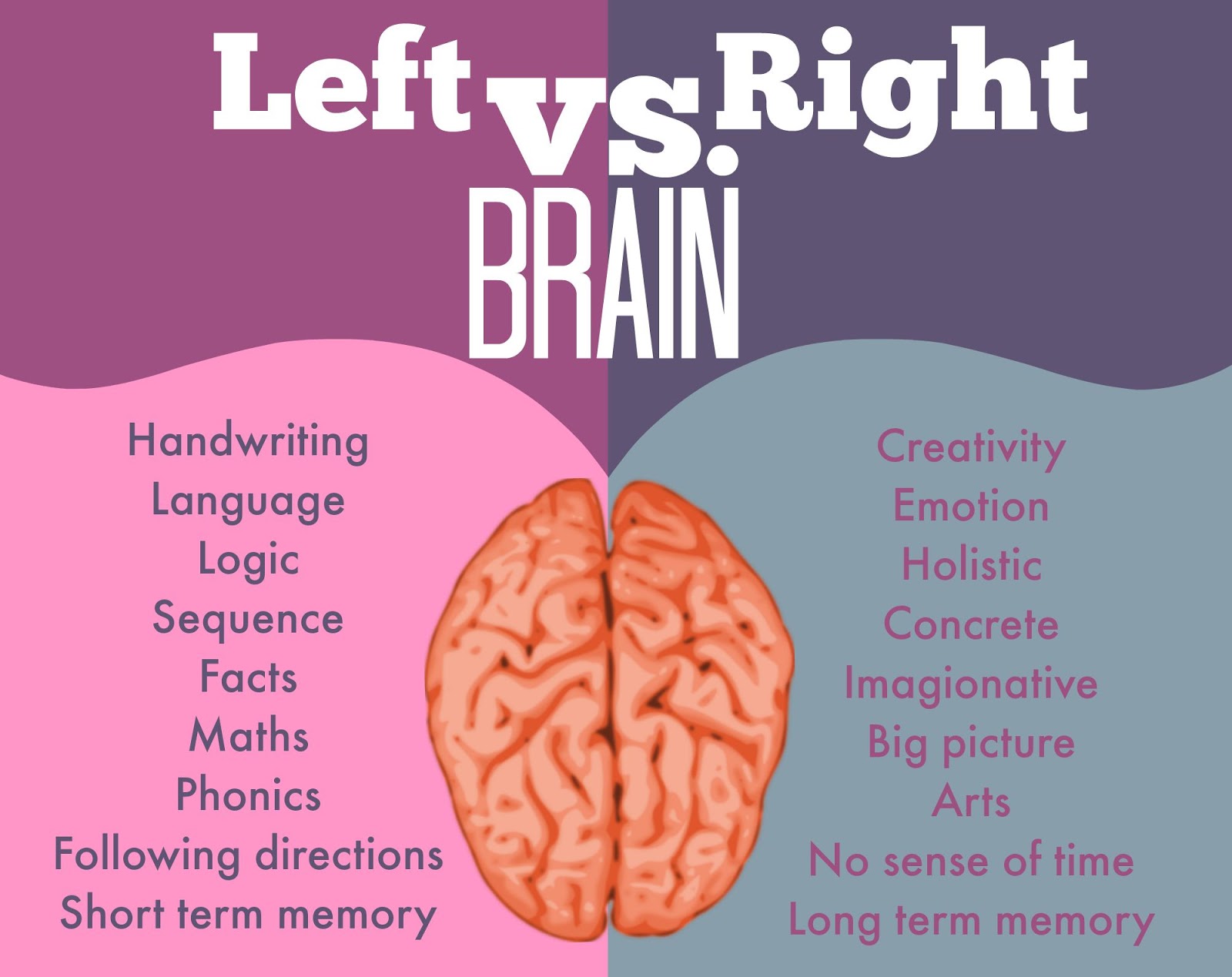Ever found yourself drawn to those quirky online quizzes that tell you if you're a "left-brained" or "right-brained" person? Or maybe you’ve heard someone described as being either a logical thinker or a creative free spirit, attributing it to their dominant brain hemisphere. The idea of left and right brain thinking is a popular one, and it’s easy to see why! It offers a neat and tidy way to understand why we're all so wonderfully different. But how much of it is actually true, and how can this concept help us in our daily lives?
The basic idea behind left-brain/right-brain thinking is that each hemisphere of your brain specializes in different functions. The left brain is often associated with logic, analysis, language, and sequential thinking. Think of it as the organized accountant of your brain, meticulously processing information step-by-step. The right brain, on the other hand, is seen as the artistic, intuitive, and creative side, responsible for spatial reasoning, recognizing faces, and processing emotions. It's the imaginative artist who sees the bigger picture.
While the simplified version of distinct left and right brain personalities is a bit of a myth (neuroscience shows that both hemispheres are *constantly* communicating and working together), understanding these tendencies can still be beneficial. Recognizing the different strengths associated with each hemisphere can help us approach tasks more effectively. For instance, if you're struggling with a math problem, tapping into your "left-brain" by breaking it down into smaller, logical steps might be helpful. Conversely, when brainstorming ideas for a new project, letting your "right-brain" run wild with creative associations can lead to innovative solutions.
You see examples of this all the time. Writers often use "left-brain" skills to structure their stories and ensure grammatical correctness, but they rely on "right-brain" imagination to create compelling characters and storylines. Architects need the logical precision of the left brain to design structurally sound buildings, but also the spatial awareness of the right brain to create aesthetically pleasing spaces. Even everyday activities like cooking involve both hemispheres – following a recipe (left brain) while experimenting with flavors (right brain).
So, how can you leverage this understanding to enjoy activities more effectively? The key is to find the right balance and actively engage both sides of your brain.
Here are a few practical tips:
- Challenge yourself: If you're naturally drawn to analytical tasks, try exploring creative outlets like painting or playing a musical instrument. If you're more creatively inclined, try tackling logic puzzles or learning a new language.
- Mindfulness exercises: Activities like meditation and yoga can help you become more aware of your thoughts and feelings, allowing you to better integrate both your logical and intuitive thinking.
- Break down complex tasks: When faced with a daunting project, break it down into smaller, more manageable steps. This allows you to engage your left brain's analytical skills while still keeping the overall goal in mind.
- Embrace collaboration: Working with people who have different strengths and perspectives can help you see things from different angles and tap into both your logical and creative sides.
Ultimately, the most important takeaway is that both hemispheres of your brain are vital for a well-rounded and fulfilling life. By understanding their strengths and weaknesses, and by actively engaging both sides, you can unlock your full potential and enjoy a richer, more balanced experience.





